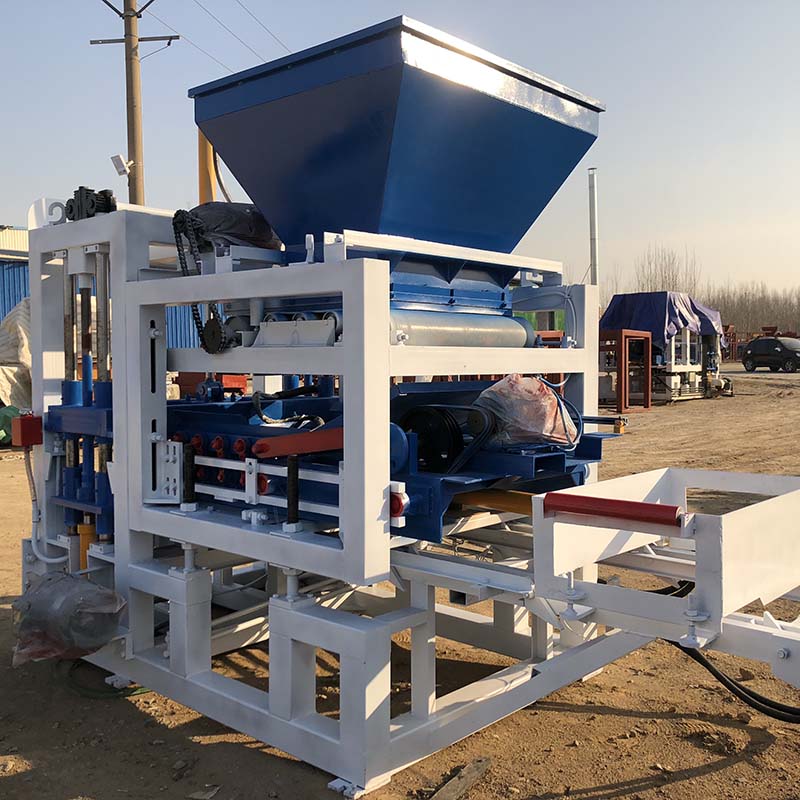
Image source:Aiwei block machine
Introduction
Fly ash brick making machines have gained prominence as an eco-friendly, cost-effective, and sustainable alternative to traditional clay brick production. Their successful implementation in construction projects across the globe has not only revolutionized the construction industry but has also contributed significantly to environmental conservation and affordable housing initiatives. In this article, we will explore case studies from different countries that highlight the successful implementation of fly ash brick making machines and their impact on construction, sustainability, and socio-economic development.
India: A Pioneer in Fly Ash Brick Production
India stands out as a pioneer in the successful implementation of fly ash brick making machines. The country has a substantial coal-fired power generation capacity, leading to a surplus of fly ash. Recognizing the potential to convert this waste material into a valuable resource, India embraced fly ash brick production on a large scale.
One remarkable case study is the Delhi Metro Rail Corporation (DMRC), which adopted fly ash bricks for the construction of metro stations and depots. By using fly ash bricks, DMRC not only reduced construction costs but also significantly lowered its carbon footprint. This environmentally responsible approach became a benchmark for other infrastructure projects in India.
Nigeria: Addressing Housing Shortages with Fly Ash Bricks
In Nigeria, housing shortages have been a persistent challenge, particularly in urban areas. The implementation of fly ash brick making machines has played a pivotal role in addressing this issue. Affordable housing initiatives, such as the Federal Housing Authority’s (FHA) Mass Housing Project, have incorporated fly ash bricks into their construction methodologies.
The Federal Housing Authority’s collaboration with local brick manufacturers and the use of fly ash bricks has resulted in the construction of affordable and sustainable housing units across Nigeria. This case study underscores how innovative building materials and technology can transform housing sectors in developing countries.
South Africa: Sustainable Housing in Informal Settlements
In South Africa, informal settlements are a widespread housing problem. The country has harnessed the potential of fly ash brick making machines to improve living conditions in these settlements. The adoption of fly ash bricks in informal housing projects has not only reduced construction costs but has also provided durable and weather-resistant housing for disadvantaged communities.
Organizations like Habitat for Humanity have actively promoted the use of fly ash bricks, making significant progress in providing secure and hygienic housing options for low-income families in South Africa. This case study exemplifies how fly ash bricks can be a catalyst for positive social change.
China: Fly Ash Bricks for Sustainable Urbanization
China’s rapid urbanization has posed environmental and resource challenges. To address these issues, China has integrated fly ash bricks into its construction practices. Government policies and incentives have encouraged builders to adopt fly ash brick making machines in residential and commercial projects.
One notable example is the construction of “Green Buildings” in cities like Beijing and Shanghai. These environmentally friendly structures utilize fly ash bricks, contributing to reduced energy consumption and lower carbon emissions. China’s success in incorporating fly ash bricks into its urbanization drive serves as a model for other countries striving for sustainable development.
Germany: Eco-Friendly Building Materials
Germany, renowned for its engineering prowess, has also recognized the benefits of fly ash bricks in sustainable construction. The country’s commitment to environmental protection aligns with the use of fly ash as a raw material. German construction companies have embraced fly ash bricks for their green building projects.
In cities like Berlin and Munich, eco-conscious developers have adopted fly ash bricks to construct energy-efficient and environmentally friendly residential complexes. This case study highlights how Germany’s stringent environmental standards can be met through the adoption of innovative building materials.
Conclusion
The global case studies presented here demonstrate the versatility and effectiveness of fly ash brick making machines in addressing construction challenges, promoting sustainability, and improving living conditions. From India’s pioneering efforts to Nigeria’s affordable housing initiatives, from South Africa’s informal settlements to China’s sustainable urbanization, and from Germany’s eco-friendly buildings, fly ash bricks have left an indelible mark on the construction industry worldwide.
These case studies underscore the significance of collaboration between governments, private sectors, and non-governmental organizations in realizing the potential of fly ash bricks. As construction technologies continue to advance, it is clear that fly ash brick making machines will play a crucial role in shaping a sustainable and affordable future for communities across the globe.
